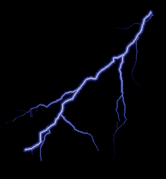





 SITE MAP LINKS TO ALL MY PAGES
SITE MAP LINKS TO ALL MY PAGES
FORUM OR MESSAGE BOARD FREE FOR ALL LINKS CAN BE FOUND BELOW ON THIS PAGE ENJOY!

START WITH A GOOD ANTENNA
When you are putting together a system for your vehicle,
whether on a budget or not, plan on buying the best antenna
system (coax, mount, antenna stud and antenna) that you can find
and go buy a radio.
WHAT ARE SOME GOOD ANTENNAS?
Antennas have to be designed to transmit and receive on the band that you are using. CB is located in the 11-meter band.(They call it that because the wavelength is about 11 meters.) CB antennas range in height from a little under 2 feet (24 inches) up to 108 inches.
The 1/4 wave whip (108") will offer better reception and transmission capability over a shorter, coiled or "loaded" antenna.
VERY short antennas, or multiple antennas that aren't "phased" properly will result in a very poor signal. Remember, for co-phasing antennas, they must be 1/4 wavelength apart which, for the 11 meter band, is around 9 feet. Most cars aren't wide enough to allow antennas to be placed 9 feet apart. The other characteristic of co-phasing is that it is much more directional- than a single antenna. It will transmit and receive MUCH better along the axis of the car than sideways off the car so if you want a omnidirectional antenna, you don't want co-phasing so you only want one antenna.
Another subject of common questions is about antennas which receive AM/FM broadcast stations and act as a CB transceiver antenna. In general, these antennas work but are not nearly as good as a dedicated CB antenna. You have to weigh the advantages and disadvantages for your circumstances.
Good brands of dedicated CB antennas in the USA include (but are not necessarily limited to Hustler, Wilson, Antenna Specialists, Solarcon, Jo Gunn, FireStick, K-40 and Francis. Some of the home made loading coils are excelent.
WHAT SHOULD I CONSIDER WHEN CHOOSING A LOCATION FOR MY ANTENNA?
The answer to this question differs greatly between base and mobile installations. Each will be answered separately.
In mobile installations, things to consider are whether you're willing to drill holes or want to use a magnet mount, gutter mount, trunk mount, or a bumper mount. If you say no to all of those,which would probably mean you have a very nice car your list of options is pretty short otherwise you can
start making choices with the following things in mind:
1) the closer your antenna is to the top & center of the vehicle, the better. So the roof is better than the rain gutter or trunk and all of those are far better than the bumper. But they'll all work.
2) a drilled/permanent mount is better than a magnet mount in the same location. (This is so that the antenna gets a better "ground plane".) If you use a magnet mount, run your coax feed line through the door or hatch that gets the least use and then leave it alone. Don't use any path where the coax would get pinched.
For base installations (i.e. at home) the best places are "as high as you can" within legal limits. The roof is normally fine. If you're in an apartment complex, you may be limited to a balcony but ask the manager - they may just want you to keep it "invisible." (Check your national and local regulations. In the USA, the FCC regulations limit CB antennas to 60 feet above ground level or 20 feet above the tallest structure on your building. Maybe shorter if you live close to an airport - one foot high for every hundred feet from the nearest runway.)
Base station antennas should have a good ground in case of lightning. (In the rare event of a lightning strike, this can mean the difference between burning down the building or just the radio.) Most cold water pipes that go into the ground will work. But the best choice for a ground would be an 8-foot (2.4m) copper rod stuck in the ground near the antenna. (If you want to use anything other than the rod for a ground, contact someone knowledgeable about housing construction and safety - you don't want to accidentally use a hot water or gas pipe. You also need to know your local building codes.
Aside from a bunch of fancy options that do little to improve
the performance of your system, all radios are pretty much the same.
The manufacturing of CB radios is a government-regulated process.
The final output power, by law, is regulated to a maximum of 4 watts.
Some manufactures try to fool you by using words such as "5 Full Watts of Power"
I thought that you might like to know what they really mean when they say 5 full watts of power.
This is not a misstatement. Also, it is not the audio they are talking about.
The Final RF transistor Collector Voltage is usually figured at 13.8 vdc. With that voltage applied to the Final's Collector, the maximum current that you can set the radio for and still be within the FCC specifications is 362.3 milliamps.
P = E x I
This means that the power that is being consumed by the final RF stage is 13.8v x 362.3 = 5 watts. The final RF stage is usually operated as a high-level modulated class "C" amplifier.
The efficiency of a class "C" amplifier is a maximum of 80% (mathematically provable). 80% of the 5 watts that the RF final consumes from the automobile battery or the A. C. Power Supply is 4 watts.
The folks that advertise 4 watts output power are correct and the ones that advertise a full 5 watts of power are also correct.
If anyone is advertising 5 watts of power OUTPUT, then they are lying as there is no 5 watts OUTPUT on transmit unless the radio is operating against the FCC Rules and Regulations.
Of course, there is absolutely nothing wrong with having all of the features, but not if the extra cost means that you are going to skimp on the antenna system. It is a bad trade off and one that is all to often exercised. The best radio with a lousy antenna system will NEVER outperform a cheap radio with a good antenna system. If anyone tries to tell you otherwise … run for the door. Cheap antenna systems are cheap for a reason and that almost always means lousy components throughout.
In many cases, it isn't always just the antenna that is bad. In way too many instances you get a piece of coax that would be best utilized if it were used to tie your dog to a tree. There is a lot of junk cable on the market! If you were watering your yard with a hose that was literally full of holes you would better understand the problem of poor coax cable. Unfortunately, you can't see RF energy pouring out, or interference pouring into a piece of bad coax, but that is what you can often end up with.
Another part to watch for is the stud mount. The stud mount needs to be mechanically strong and electrically superior. Those in the know about electronics, RF or otherwise, will tell you that the majority of problems in an electrical or electrical-mechanical device will involve poor connections that cause opens, shorts or high resistance. The stud mount is an electrical mechanical device that must support the antenna and act as a bridge between the antenna and the coaxial feed to the radio. Again, if you are looking for cheap ones, you can find them. They are made of aluminum, or they use non-stainless steel washers that are sure to corrode, or they have cheap plastic insulators that crack or collapse under normal conditions. And some of them have all of the above!
When you shop, shop smart and you will only need to do it once. Give the majority of your time and money to the antenna system and you will be making the right moves.
SWR
1 - By definition SWR is the ratio of outgoing power to reflected power. Any power being reflected, is NOT going out of the antenna. A perfect match is ALL wattage going out and NONE reflected back to radio.
How do you figure the coax length? The formula is as follows.
468 divided by Freq. in Mhz. times velocity factor (.66 for Polyethylene, .78 for Foam) will give you the following.
POLYETHYLENE
Channel 1 - 468 -:- 26.9 = 17.397 x .66 = 11.482 or 11'5" x 2 = 23' 0"
Channel 20 - 468 -:- 27.2 = 17.205 (or 206.4") x .66 = 11.355 or 11'3" x 2 = 22' 8"
Channel 40 - 468 -:- 27.4 = 17.080 x .66 = 11.272 or 11'2" x 2 = 22' 6"
FOAM
Channel 1 - 468 -:- 26.9 = 17.397 x .78 = 13.569 or 13'6" x 2 = 27' 0"
Channel 20 - 468 -:- 27.2 = 17.205 (or 206.4") x .78 = 13.419 or 13'5" x 2 = 26' 10"
Channel 40 - 468 -:- 27.4 = 17.080 x .78 = 13.322 or 13'3" x 2 = 26' 6"
The 206.4 inches above is significant in that the Radio Shack whip is 102 inches, many mobil setups can't use the 11 or 13 ft. lengths because it will not reach the radio, so in the real world the best length is 22 ft. or 26 ft which should get the SWR's down.
Now Francis Antennas recommends 18 Ft. that's because it is tuned to that length of coax. I have found this to be a good length for a Francis.
OK, what does that have to do with base station antennas?
A little story here, when I set up my Base Station, I used an Antron 99, I put it on top of a 40 Ft. pushup pole. I used the old standby of 36 Ft. of coax for a full wavelength, I needed more than that so I went to Radio Shack and got 72 Ft. of RG-8 foam coax.
I followed Antron's instructions went to Channel 40 then went to Channel 1 and balanced the 2 readings by adjusting the tuning rings on the Antron, the outcome was 1.5 SWR on both ends and 1.4 on Channel 20.
Next I inserted a 3 Ft. jumper into the line, humm! On Channel 20 the SWR went UP! That meant the coax was too long so I cut 2 Ft. off, SWR came DOWN to 1.2, cut off 2 more Ft. making the total length 68 Ft. SWR came down again to 1.05 to 1, which I can live with. This will work for the Antron 99 which is tunable. Other antennas may be different but the principal is the same.
The fact that the coax was getting shorter shows me that the above figures are good. In the real world, it didn't work out that way. You must make real world adjustments.
NOTE: In a mobil setup, if your SWR is 3, your antenna is not grounded. There is one thing I can't say enough about and that is GROUNDING!! If in doubt Ground it out, especially if you are running power, for antennas mounted on the trunk, you need to ground the trunk with copper straps, like battery straps.
TIPS
Most of these tips are very basic, and are geared for the novice or begenner.
I can't begin to tell you how many times somone has brought a radio to me to fix and the only thing wrong with it was the PA switch was on, what a bummer! When all else fails, check your PA switch.
Don't let anyone tell you that the shield on the coax doesn't have to be soldered, they don't know what they are talking about. Also, for best results, always use Amphenol connectors.
One of the most common problems encountered is bad wiring in the mic, if your radio doesn't transmit or does not receive, the mic or mic cord may be at fault.
To determin if your mic is making audio, flip the CB/PA switch to PA with an external speaker pluged into the PA jack, transmit, if you hear yourself in the PA speaker you know the Audio is working.
If there is receive on your meter but no audio.
1 - Make sure the squelch is turned all the way counter clockwise.
2 - If you plug in an external speaker and get sound then you know the built in speaker is bad.
IF YOU TAKE YOUR RADIO TO A CB SHOP CHECK THEM OUT FIRST ASK AROUND ABOUT EXPERIENCES LOCAL CBRS HAVE HAD WITH THAT CB SHOP A GOOD NUMBER OF THEM WILL TRY TO TALK YOU INTO A NEW RADIO OR, MESS UP YOUR RADIO SO BAD YOU WILL ALMOST HAVE TO BUY A NEW ONE. A REAL GOOD TECH IS HARD TO FIND. DON'T AND I REPEATE DON'T LET FRIENDS GET INTO YOUR RADIOS UNLESS YOU KNOW THEY REALLY KNOW WHAT THEY ARE DOING. GOOD INTENTIONS HAVE SOMETIMES MADE GOOD FRIENDSHIPS GO BAD
If you find the radio is not working right check out your antenna make sure everything is plugged in right.
Make sure you don't have an antenna problem, or a short in the antenna. Its very important to check out your connectors. Use an ohm meter. Check out your SWR should be from 0 to 1.5 anything higher then that can destroy your radio.
HIGH SWR TROUBLESHOOTING
not applicable to no-ground-plane installations)
The following list shows the most probable causes of high SWR in order from the most common causes to the least common causes. If experiencing SWR problems, check each of the following conditions in the order shown until problem has been uncovered.
Shorted Stud Mount
Disconnect coaxial cable at antenna mount. Test continuity from mount to antenna coupling nut. There should NOT be any continuity. If shorted, reposition or replace insulators and retest.
Improper Type and Length of Coax
Single antenna installations require RG-58 type coax and dual antennas require the use of RG-59 type coax cables. We recommend 18 foot long coax leads from the radio to each antenna, especially on installations that are displaying high SWR problems.
Shorted Coaxial Cable
Disconnect coax at radio end. Test for continuity between center pin and threaded sleeve. There should NOT be any continuity. If shorted, repair and retest.
No Chassis Ground at Antenna Mount
Test for continuity between the antenna mount and the vehicle's common ground. There MUST be continuity. Repair and retest as required.
Open Coaxial Cable Center Lead
Disconnect coax at radio end. Test for continuity from center pin to antenna base. There MUST be continuity. If necessary, repair and retest.
Open Coaxial Cable Ground Shield
Disconnect coax at radio end. Test for continuity from the antenna mount to the coax connectors threaded sleeve at the radio end of the coax. There MUST be continuity. If necessary, repair and retest.
Improper Installation Location
Transmit antennas need free space around them if expected to perform properly. If more than 30% of the antennas overall length is parallel to the side of the vehicle and within twelve inches of that surface, SWR problems are probable, i.e. between truck cab and shell, corner of truck bed near cab, low mount position on motorhome, etc. Relocate the antenna to a position of performance (versus convenience or appearance) and retest.
Insufficient Ground Plane Available
Fiberglass, plastic and thin aluminum vehicle bodies lack the reflective characteristics needed for proper antenna performance. On some occasions, running a 12ga or heavier wire from the antenna mount to the vehicles chassis ground will be sufficient. Otherwise, a no-ground-plane antenna system may be required.
Low Quality Coax Cable
Delivering radio frequency to an antenna via poor quality coaxial cable is the equivalent of watering your lawn with a hose full of holes. The bitterness of low quality will linger long after the sweetness of low price is gone. Use high quality coax only.
Antenna Tuned Without Tip
If the antenna is tuned without the tip then put on after tuning is completed, the SWR will change when the tip is installed. All readings must be made with the antenna tip in place.
Defective SWR Meter
Some are made bad and others have been known to go bad. Try to confirm readings with a second meter.
Damaged Antenna
Aside from apparent damage that is visible from the antenna striking immovable solid objects, you can test for any internal damage by checking continuity from the antenna base to the tunable tip extender or end of wire. There MUST be continuity. If there is no continuity, the antenna must be repaired or replaced.
Make sure you put waterproof sealer where the coax separates to keep the water out of the coax.
MORE TIPS AND STUFF THEY DON'T TELL YOU
All Galaxy radios have the date of manufacture encoded into the serial number. The first number is the last number of the year it was made, the second two numbers are the month. Is your radio a new unit, or a refurb. If there is no serial number, it is definitely not a new radio. There are many Northstar radios floating around out there, yet they have been out of production for almost two years. If there is no serial number it is a refurb.
The Melanka, Saturn, Pluto, and Mirage are not real Galaxy radios. They are manufactured with the name on the front so you will buy the radio. They are imported by another company. They have no warranty, and no tech support center. They have a lot less stringent quality control, but are usually a decent radio with a little work. The Mirage is a label that a private importer uses on radios coming back out of Malaysia, refurbished Galaxy and Ranger radios with a new face. This is no real problem unless the repair center didn't actually find and cure the original problem the radio was returned for.
President radios are made by President Electronics, which is owned by a huge electronics firm we have all heard of. President radios are dramatically different in most aspects, supreme quality with very few real design errors. The new Ranger radios are the most technologically advanced platform available, and with the newest design innovations. They have the best all around transceivers. Galaxy offers some very stringent quality control, and an impressive warranty program. The Galaxy is a tried and true design, very reliable. The Connex radios are also very reliable and of a sound design, with the most popular features. Basically somewhere in between Ranger and Galaxy, but basically not too different from either of the two.
HOW TO KEEP YOUR NEIGHBORS FRIENDLY AND PROTECT YOUR INVESTMENT
In your quest to be the LOUDEST, BIGGEST, BAD RADIO out there, or, you really just enjoy DX'ing,SSB
and want to reach the other side of the world. You have spent a small fortune, and your one of those, lucky enough to have a 100 foot crank up tower, a great Joe Gunn Beam antenna on the very top or a Moonraker Four. A 1k base foot warmer, or more watts that will cook your breakfast, lunch, and hot-dogs for dinner all while your talking. Purchased a RCI 2990 base radio, with a built in 100 watt linear, Turbo Tuned, driving that 1k. A D104 power mic, endless echo and then had all the super modifications you could possibly put in the radio, a half or dozen noise toys or more, installed in a special made box. so you can harass all the truckers that happen to be in your area.
Your number one and all that power makes you feel like God. However, unless you live on an Island, your bliss will soon turn into THE WORSE NIGHTMARE YOU HAVE EVER HAD.
Now that would be the ideal set up, However even on a smaller scale, with no tower, or just a push up pole with an, Antron 99. If you are running power over 200 watts your going to bleed, and I mean bleed, all over everyone's phone lines, computers, televisions, and after eating all those hot-dogs, for a snack you might even be able to order a Big Mac from your local MC Donald's all without leaving the radio room in your house.
If the FCC has its way, soon local law enforcment will be knocking at your door. (They are trying to pass a bill to let the local law eforcement handle these type of problems.) (IT WILL NEVER PASS) Or worse you come out of your house one morning find your tires slashed, your coax has been cut, paint spilled all over the inside of your car and then your find out some of the locals that were once your friends are planing to hang you from your great tower.
However UNLESS you take some steps to prevent this from happining you will need to do some filtering. and grounding. Its a small price to pay to protect what you have and to keep peace. I have seen a lot of towers go up and come down. Money spent on beams and linear's only to be sold. Especially If you live near an airport you need to take extra precaution.
HERE IS HOW ONE PERSON SOLVED THIS PROBLEM
I went to the home owner and installed high pass
filters on all of there equipment. I added toroid cores,
and built a top of the line low pass filter for home and
auto's. I have had no more problems after this. I just
hope my (100ft.) tower does not draw any attention.
One more thing on my phone junction box I add on each wire coming in, a ceracmic disk capacitor from hot to ground. No phone problems now. GOOD coax and GOOD grounds
All of these tips are important and can save you a lot of money. As time goes by I'll place more tips on this page.


 Vote For The Top CB Radio Site!
Vote For The Top CB Radio Site!